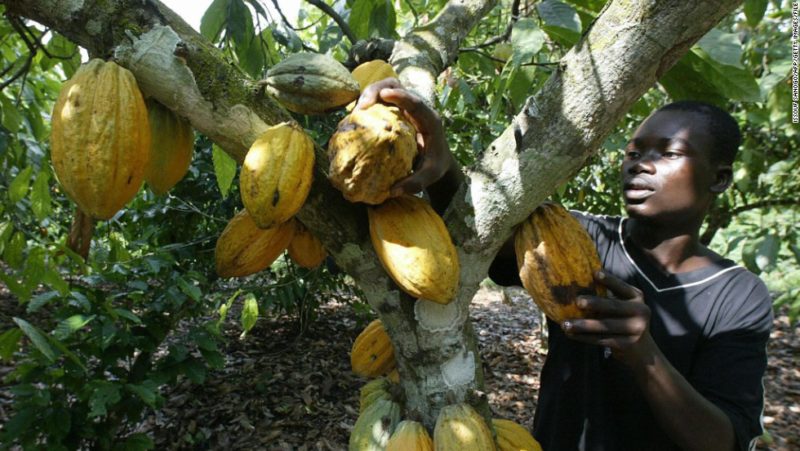This week, relevant international, regional and national stakeholders in cocoa production and trade are meeting in Ghana’s capital, Accra, for a historic purpose. Dubbed, “International Conference on Cocoa Pricing and Sustainability,” the focus is on securing equitable living income for cocoa farmers.

The conference is also bringing together organisations and individuals who have been involved in cocoa pricing in the West Africa sub-region to share experiences and strategies in guaranteeing price stabilisation for cocoa farmers.
The two-day conference, which holds from Tuesday, November 10 to Thursday, November 11, 2020, is a joint initiative by ClientEarth and EcoCare Ghana, and funded through the United Kingdom Department for International Development’s (DfID) Forest Governance, Markets and Climate (FGMC) Programme. The conference is also supported by TaylorCrabbe Innitiative, Ghana Civil-Society Cocoa Platform (GCCP) and Fern, based in the UK.
And why this sudden interest in the livelihood of West Africa’s cocoa farmer? Several reasons can be assigned.
First of all, the trade in cocoa beans had a total value of $8.6 billion in 2017 and is expected to reach $16.32 billion by 2025, according to the Global Market Report on Cocoa published by the International Institute for Sustainable Development (IISD). The Report says the chocolate industry, which consumed 43 % of cocoa in 2017, had a retail market value of $106.19 billion, and is expected to reach $189.89 billion by 2026.
Secondly, the cocoa and chocolate industry generate jobs in importing countries, where cocoa beans are often exported for processing and sale to end consumers. In 2011, it supported about 2,000 companies in the European Union and 650 companies in the United States, employing 70,000 people.
Thirdly, the cocoa sector is an important source of livelihoods, providing revenue to about 50 million people mostly in developing countries and particularly the West African sub-region. Cocoa is a very important agro-commodity in the sub-region, contributing significantly to the socio-economic well-being of many households.
In the 2019/2020 cocoa season, the top three cocoa producing ECOWAS member countries namely: Côte d’Ivoire, Ghana and Nigeria, together accounted for more than two-thirds of global cocoa supply, contributing 3.4 of the total five million tonnes of cocoa supplied during the period. However, figures from the International Cocoa Organisation (ICCO) indicate that Africa’s cocoa producing countries capture just 3% of the global chocolate industry revenue.
The issue is that though responsible for producing the raw material used for the multi-billion industry of assorted confectionaries and beverages, the sub-region’s cocoa farmers who are said to be the world’s highest producers of cocoa, are also known to be among the poorest of the poor. For instance, in Côte d’Ivoire, which is the world’s largest producer of cocoa, the daily income of a farmer is four times less than the global poverty line of $2 a day. This amount needs to be a lot higher to achieve a level sufficient to cover daily basic needs (living wage) of all cocoa farmers in the sub-region.
These factors clearly point to one direction – sustainability. If the cocoa sector can continue to play its significant role as a source of livelihood and job-generator, there is need for sustainability measures to be employed. And one key area is the need to sustain farmers’ livelihood and interest in cocoa cultivation, currently facing challenges including poverty, diseases, child labour, climate change and deforestation.
Therefore, measures to promote and sustain yields, must obviously address cocoa farmer poverty. However, observers are concerned that despite all the international efforts such as introducing Climate Smart Cocoa to boost cocoa production at the moment, the core of the problem, which is extreme poverty of cocoa farmers, is still not being addressed.
In order to make progress on this issue, in 2019, Ghana and Cote d’Ivoire formed a partnership dubbed “an OPEC for cocoa,” that has successfully imposed a pricing mechanism aimed at helping producers earn a living wage.
In an interview, the Co-founder and Managing Campaigner of EcoCare Ghana, Obed Owusu-Addai, who has been following this development, explained how two country partnership succeeded in their bid.
“The proposed pricing mechanism was based on a projected floor price of $2,600 per tonne of cocoa, with a Living Income Differential (LID) of $400 being imposed on every tonne of cocoa when the price falls below the projected floor price of $2,600 per tonne.”
He indicated that although the proposal was initially resisted by industry players, Ghana and Cote d’Ivoire persevered and were rewarded with an overwhelming acceptance by the major industry players.
“What is now left,” says Obed, “is the implementation of the new floor price and LID that has hit a snag due to the Covid-19 pandemic, which has affected the market negatively.”
He adds: “As we get closer to the new cocoa season, there are a lot of expectations on the governments of Ghana and Cote d’Ivoire to announce prices for the new season taking into account the new floor price and impact of Covid-19.”
Delegates at the International Cocoa Conference are likely to touch this issue as well as clarify the applicable regulatory frameworks governing cocoa production and trade. They will discuss and develop concrete workable strategies and roadmaps to address pricing challenges in the cocoa sector; with emphasis on guaranteeing sustainable cocoa production.
By Ama Kudom-Agyemang
